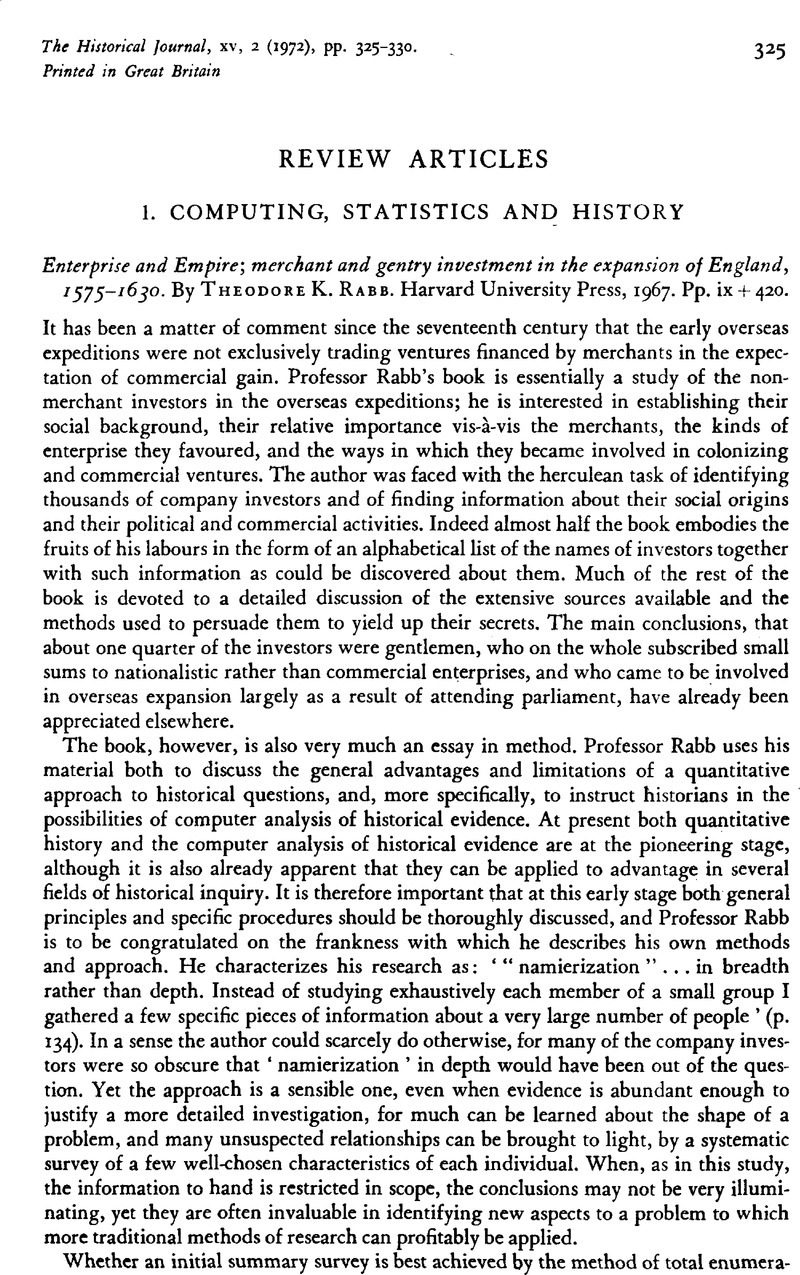Article contents
1. Computing, Statistics and History
Published online by Cambridge University Press: 11 February 2009
Abstract

- Type
- Review Articles
- Information
- Copyright
- Copyright © Cambridge University Press 1972
References
1 A flexible input system which allows the historian to store his evidence in text form, and to describe its structure so that he can retrieve it simply, has been developed by the Cambridge Group for the History of Population and Social Structure for the IBM 360 and 370 series computers. The system reports error states which it encounters in the data, and which are defined by the user. The user has access to his material either through his own programs, written in one of the common high-level languages (e.g. ALGOL, PLi), or through the general statistical program package SPSS.
2 Selvidge, J.E. and Rabb, T.K., ‘DATATEXT: a simple and flexible programming system for historians, linguists, and other social scientists ’, Computer Studies in the Humanities and Verbal Behaviour, 1, 3 (10. 1968), 107–14.Google Scholar
3 Margolis, Michael, ‘ OSIRIS and SPSS: new computer packages for the analysis of social science data ’, Historical Methods Newsletter, III, 2 (03. 1970), 15–17CrossRefGoogle Scholar - available from the Department of History, University of Pittsburgh, Pa, U.S.A.
- 4
- Cited by


